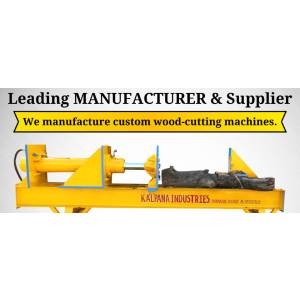Efficient management of automation spare parts is crucial for minimizing downtime and maintaining seamless operations in any manufacturing or industrial setup. A well-organized inventory system ensures that the right parts are available when needed, avoiding costly delays and improving overall productivity.
“Automation is no longer a luxury but a necessity for modern businesses. As Aytekin Tank, CEO of Jotform, writes in his book Automate Your Busywork: Automation has opened a world of possibilities that extends what we’re capable of doing on our own. Harnessing its power frees us to focus on living the lives that only we as human beings can.”
Here are some strategies to help streamline your automation spare parts inventory:
1. Conduct a Comprehensive Inventory Audit
Start by conducting a thorough audit of your current inventory. Identify all the spare parts you have, their quantities, and their locations. This audit should include checking the condition of the parts to ensure they are still usable. Use this data to create a detailed inventory database, which will serve as the foundation for managing your stock effectively.
2. Classify Spare Parts by Criticality
Not all spare parts are equally important. Classify your inventory based on the criticality of each part. For example, parts that are essential for the operation of key machinery should be prioritized and kept in higher quantities. Less critical parts can be ordered on-demand to reduce holding costs. This classification helps in prioritizing which parts need to be stocked in larger quantities and which can be minimized.
3. Implement a Just-In-Time (JIT) Inventory System
Adopting a Just-In-Time inventory approach can significantly reduce the amount of spare parts you need to keep on hand. By coordinating closely with suppliers to deliver parts as needed, you can minimize storage costs and reduce the risk of parts becoming obsolete. Ensure that your suppliers can meet your demand quickly and reliably to make this system work effectively.
4. Utilize Inventory Management Software
Investing in advanced inventory management software can greatly enhance the efficiency of your spare parts management. These systems offer real-time tracking, automated reordering, and predictive analytics to forecast future needs. Features like barcode scanning and RFID tagging can also streamline the inventory process and reduce the likelihood of human error.
5. Regularly Review and Update Inventory Policies
Your spare parts inventory needs may change over time, so it’s important to regularly review and update your inventory policies. Conduct periodic assessments to determine if your stocking levels are appropriate and adjust your strategies based on production changes, equipment upgrades, or shifts in supplier reliability.
6. Establish Strong Supplier Relationships
Building strong relationships with your suppliers can lead to better terms, faster delivery times, and more reliable service. Work with suppliers who understand your needs and can offer flexible solutions. Regular communication can help ensure that any issues are quickly addressed and that you are always aware of the latest developments that could impact your inventory.
7. Train Staff on Best Practices
Ensure that your staff is well-trained in inventory management best practices. They should understand the importance of accurate record-keeping, how to properly handle and store spare parts, and the procedures for reordering parts. Regular training sessions can help keep everyone up to date and maintain a high level of efficiency in your inventory processes.
8. Leverage Data Analytics
Use data analytics to gain insights into your inventory usage patterns. Analyze historical data to identify trends, such as which parts are most frequently used or which have the longest lead times. This information can help you make more informed decisions about stocking levels and reorder points, ensuring that you have the right parts available when needed without overstocking.
9. Implement a Cycle Counting Program
Cycle counting is a method of auditing inventory by counting a subset of inventory on a regular basis, rather than doing a complete inventory count once or twice a year. This helps maintain accurate inventory records and allows for the identification and correction of discrepancies in a timely manner.
Conclusion
Efficient management of automation spare parts inventory is key to maintaining uninterrupted operations and reducing costs. By implementing these strategies, you can ensure that your inventory is optimized, your downtime is minimized, and your overall efficiency is maximized. Regular audits, proper classification, advanced inventory systems, and strong supplier relationships are all essential components of a streamlined inventory management process.
Photo Credit: Simplilearn



